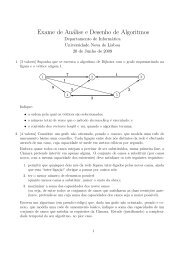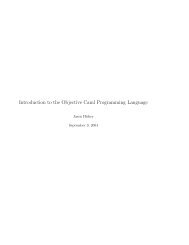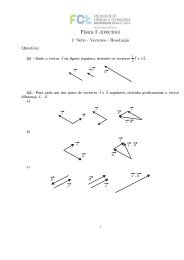Security Articles from Wikipedia
Security Articles from Wikipedia
Security Articles from Wikipedia
You also want an ePaper? Increase the reach of your titles
YUMPU automatically turns print PDFs into web optimized ePapers that Google loves.
Transport Layer <strong>Security</strong> 159<br />
Handshake message data length<br />
Message Types<br />
Code Description<br />
0 HelloRequest<br />
1 ClientHello<br />
2 ServerHello<br />
11 Certificate<br />
12 ServerKeyExchange<br />
13 CertificateRequest<br />
14 ServerHelloDone<br />
15 CertificateVerify<br />
16 ClientKeyExchange<br />
20 Finished<br />
This is a 3-byte field indicating the length of the handshake data, not including the header.<br />
Note that multiple Handshake messages may be combined within one record.<br />
Alert protocol<br />
This record should normally not be sent during normal handshaking or application exchanges. However, this<br />
message can be sent at any time during the handshake and up to the closure of the session. If this is used to signal a<br />
fatal error, the session will be closed immediately after sending this record, so this record is used to give a reason for<br />
this closure. If the alert level is flagged as a warning, the remote can decide to close the session if it decides that the<br />
session is not reliable enough for its needs (before doing so, the remote may also send its own signal).<br />
Level<br />
+ Byte +0 Byte +1 Byte +2 Byte +3<br />
Byte<br />
0<br />
Bytes<br />
1..4<br />
Bytes<br />
5..6<br />
Bytes<br />
7..(p-1)<br />
Bytes<br />
p..(q-1)<br />
21<br />
Version Length<br />
(Major) (Minor) 0 2<br />
Level Description<br />
MAC (optional)<br />
Padding (block ciphers only)<br />
This field identifies the level of alert. If the level is fatal, the sender should close the session immediately.<br />
Otherwise, the recipient may decide to terminate the session itself, by sending its own fatal alert and closing<br />
the session itself immediately after sending it. The use of Alert records is optional, however if it is missing<br />
before the session closure, the session may be resumed automatically (with its handshakes).<br />
Normal closure of a session after termination of the transported application should preferably be alerted with<br />
at least the Close notify Alert type (with a simple warning level) to prevent such automatic resume of a new<br />
session. Signalling explicitly the normal closure of a secure session before effectively closing its transport









